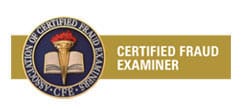
Data mining used in forensic accounting is the art of taking a volume of data (bank transactions, accounting transactions, or other data), and applying certain filters to the data to isolate specific transactions of interest.
Data mining techniques can be applied in so many of the cases that we receive to help our clients focus in on areas of concern. Take some recent Indiana case examples:
- A sole heir to her parent’s trust account, our client had no access to the trust account and limited knowledge of its income-generating operations. Her estranged Aunt was the trustee and also the financial Power of Attorney prior to the parents’ death. Our client wanted to know if trust fund money was inappropriately distributed to other parties and whether the income from the trust property was fully deposited into the trust account. We compiled six years of Trust bank account statements and performed data mining to identify payments made to certain family members and other parties which could have inappropriately displaced money that rightfully belonged to our client. Our data mining summaries were based on indisputable data, which assisted in our client expediently reaching a settlement.
- Another client has a significant ownership stake in an LLP. The business is run by his two partners, who are also the other primary owners. Our client has limited knowledge of the company operations or its profitability. He is concerned that he has never received distributions, and hired us to determine whether the business has been profitable, what has happened to those profits, and whether he should have been entitled to any cash distributions. We obtained 12 years of data from the company’s accounting software. Data mining indicators we considered were payments made to the business partners personally, and payments made to companies run by the business partners. These are high risk transactions that could indicate improper payments.
Data mining possibilities are endless and very specific to each case. In every instance, it allows us to take a large volume of transaction and identify a much smaller number of transactions that are most relevant to our client’s needs. If you have a situation where the volume of information seems overwhelming, contact us to see how we can help make it manageable and useful to you.
Jennifer Hathaway, CPA, CFE
President
Certified Fraud & Forensic Investigations





